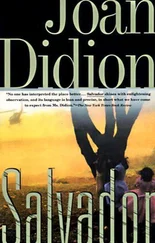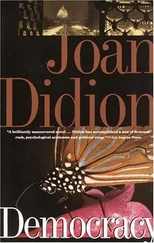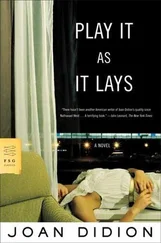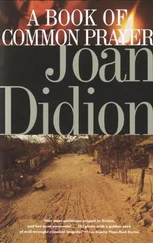Joan Didion - Vintage Didion
Здесь есть возможность читать онлайн «Joan Didion - Vintage Didion» весь текст электронной книги совершенно бесплатно (целиком полную версию без сокращений). В некоторых случаях можно слушать аудио, скачать через торрент в формате fb2 и присутствует краткое содержание. Год выпуска: 2004, Издательство: Vintage Books, Жанр: Биографии и Мемуары, Публицистика, на английском языке. Описание произведения, (предисловие) а так же отзывы посетителей доступны на портале библиотеки ЛибКат.
- Название:Vintage Didion
- Автор:
- Издательство:Vintage Books
- Жанр:
- Год:2004
- ISBN:нет данных
- Рейтинг книги:4 / 5. Голосов: 1
-
Избранное:Добавить в избранное
- Отзывы:
-
Ваша оценка:
- 80
- 1
- 2
- 3
- 4
- 5
Vintage Didion: краткое содержание, описание и аннотация
Предлагаем к чтению аннотацию, описание, краткое содержание или предисловие (зависит от того, что написал сам автор книги «Vintage Didion»). Если вы не нашли необходимую информацию о книге — напишите в комментариях, мы постараемся отыскать её.
Vintage Didion — читать онлайн бесплатно полную книгу (весь текст) целиком
Ниже представлен текст книги, разбитый по страницам. Система сохранения места последней прочитанной страницы, позволяет с удобством читать онлайн бесплатно книгу «Vintage Didion», без необходимости каждый раз заново искать на чём Вы остановились. Поставьте закладку, и сможете в любой момент перейти на страницу, на которой закончили чтение.
Интервал:
Закладка:
This was not, then, the general exile complaint about a government that might have taken up their struggle but had not. This was something more specific, a complaint that the government in question had in fact taken up la lucha , but for its own purposes, and, in what these exiles saw as a pattern of deceit stretching back through six administrations, to its own ends. The pattern, as they saw it, was one in which the government of the United States had repeatedly encouraged or supported exile action and then, when policy shifted and such action became an embarrassment, a discordant note in whatever message Washington was sending that month or that year, had discarded the exiles involved, had sometimes not only discarded them but, since the nature of la lucha was essentially illegal, turned them in, set them up for prosecution; positioned them, as it were, for the fall.
They mentioned, as many exiles did, the Omega 7 prosecutions. They mentioned, as many exiles did, the Cuban burglars at the Watergate, who were told, because so many exiles had come by that time to distrust the CIA, that the assignment at hand was not just CIA, but straight from the White House. They mentioned the case of Jose Elias de la Torriente, a respected exile leader who had been, in the late 1960s, recruited by the CIA to lend his name and his prestige to what was set forth as a new plan to overthrow Fidel Castro, the “Work Plan for Liberation,” or the Torriente Plan.
Money had once again been raised, and expectations. The entire attention of el exilio had for a time been focused on the Torriente Plan, a diversion of energy that, as years passed and nothing happened, suggested to many that what the plan may have been from its inception was just another ad hoc solution to the disposal problem, another mirror trick. Jose Elias de la Torriente had been called, by a frustrated community once again left with nowhere to go, a traitor. Jose Elias de la Torriente had been called a CIA stooge. Jose Elias de la Torriente had finally been, at age seventy, as he sat in his house in Coral Gables watching The Robe on television about nine o’clock on the evening of Good Friday, 1974, assassinated, shot through the Venetian blind on a window by someone, presumably an exile, who claimed the kill in the name “Zero.”
This had, in the telling at the dinner table, the sense of a situation played out to its Aristotelian end, of that inexorable Caribbean progress from cause to effect that I later came to see as central to the way Miami thought about itself. Miami stories tended to have endings. The cannon onstage tended to be fired. One of those who spoke most ardently that evening was a quite beautiful young woman in a white jersey dress, a lawyer, active in Democratic politics in Miami. This dinner in the condominium overlooking Biscayne Bay took place in March of 1985, and the woman in the white jersey dress was María Elena Prío Durán, the child who flew into exile in March of 1952 with her father’s foreign minister, her father’s minister of the interior, her father, her sister, and her mother, the equally beautiful woman in the hat with the fishnet veiling.
I recall watching María Elena Prío Durán that night as she pushed back her hair and reached across the table for a cigarette. This was a long time before the C-123K carrying Eugene Hasenfus fell from the sky inside Nicaragua. This was a long time before Eugene Hasenfus mentioned the names of the 2506 members already in place at Ilopango. NICARAGUA HOY, CUBA MAÑANA. Let me tell you about Cuban terrorists, another of the exiles at dinner that night, a prominent Miami architect named Raúl Rodríguez, was saying at the end of the table. Cuba never grew plastique. Cuba grew tobacco. Cuba grew sugarcane. Cuba never grew C-4. María Elena Prío Durán lit the cigarette and immediately crushed it out. C-4, Raúl Rodríguez said, and he slammed his palm down on the white tablecloth as he said it, grew here.
— 1987
MIAMI THREE
Steven Carr was, at twenty-six, a South Florida lowlife, a sometime Naples construction worker with the motto DEATH BEFORE DISHONOR and a flaming skull tattooed on his left biceps; a discharge from the Navy for alcohol abuse; and a grand-theft conviction for stealing two gold-and-diamond rings, valued at $578, given to his mother by his stepfather. “She only wore them on holidays, I thought she’d never notice they were gone,” Steven Carr later said about the matter of his mother’s rings. He did not speak Spanish. He had no interest in any side of the conflict in Nicaragua. Nonetheless, in March of 1985, according to the story he began telling after he had been arrested in Costa Rica on weapons charges and was awaiting trial at La Reforma prison in San José, Steven Carr had collected arms for the contras at various locations around Dade County, loaded them onto a chartered Convair 440 at Fort Lauderdale — Hollywood International Airport, accompanied this shipment to Ilopango airport in San Salvador, and witnessed the eventual delivery of the arms to a unit of 2506 veterans fighting with the contras from a base about three miles south of the Nicaraguan border.
This story later became familiar, but its significance at the time Steven Carr first told it, in the summer of 1985 to Juan Tamayo of the Miami Herald , was that he was the first person to publicly claim firsthand knowledge of all stages of a single shipment. By the summer of 1986, after Steven Carr had bonded out of La Reforma and was back in South Florida (the details of how he got there were disputed, but either did or did not involve American embassy officials in Panama and San José who either did or did not give him a plane ticket and instructions to “get the hell out of Dodge”), doing six months in the Collier County jail for violation of probation on the outstanding matter of his mother’s rings, he was of course telling it as well to investigators from various congressional committees and from the U.S. attorney’s office in Miami. This was the point, in August 1986, at which his lawyers asked that he be released early and placed, on the grounds that the story he was telling endangered his life, in a witness protection program. “I’m not too popular with a lot of people because I’m telling the truth,” Steven Carr told the Miami Herald a few days before his petition was heard and denied. “I wouldn’t feel very safe just walking the streets after all this is over.”
Steven Carr was released from the Collier County jail, having served his full sentence, on November 20, 1986. Twenty-three days later, at two-thirty on the morning of December 13, 1986, Steven Carr collapsed outside the room he was renting in Panorama City, California (a room that, according to the woman from whom he had rented it, Jackie Scott, he rarely left, and in which he slept with the doors locked and the lights on), convulsed, and died, of an apparent cocaine overdose. “I’m sorry,” Steven Carr had said when Jackie Scott, whose daughter had heard “a commotion” and woken her, found him lying in the driveway. Jackie Scott told the Los Angeles Times that she had not seen Steven Carr drinking or taking drugs that evening, nor could she shed any light on what he had said next: “I paranoided out — I ate it all.”
Jesus Garcia was a former Dade County corrections officer who was, at the time he began telling his story early in 1986, doing time in Miami for illegal possession of a MAC-10 with silencer. Jesus Garcia, who had been born in the United States of Cuban parents and thought of himself as a patriot, talked about having collected arms for the contras during the spring of 1985, and also about the plan, which he said had been discussed in the cocktail lounge of the Howard Johnson’s near the Miami airport in February of 1985, to assassinate the new American ambassador to Costa Rica, blow up the embassy there, and blame it on the Sandinistas. The idea, Jesus Garcia said, had been to give the United States the opportunity it needed to invade Nicaragua, and also to collect on a million-dollar contract the Colombian cocaine cartel was said to have out on the new American ambassador to Costa Rica, who had recently been the American ambassador to Colombia and had frequently spoken of what he called “narco-guerrillas.”
Читать дальшеИнтервал:
Закладка:
Похожие книги на «Vintage Didion»
Представляем Вашему вниманию похожие книги на «Vintage Didion» списком для выбора. Мы отобрали схожую по названию и смыслу литературу в надежде предоставить читателям больше вариантов отыскать новые, интересные, ещё непрочитанные произведения.
Обсуждение, отзывы о книге «Vintage Didion» и просто собственные мнения читателей. Оставьте ваши комментарии, напишите, что Вы думаете о произведении, его смысле или главных героях. Укажите что конкретно понравилось, а что нет, и почему Вы так считаете.












